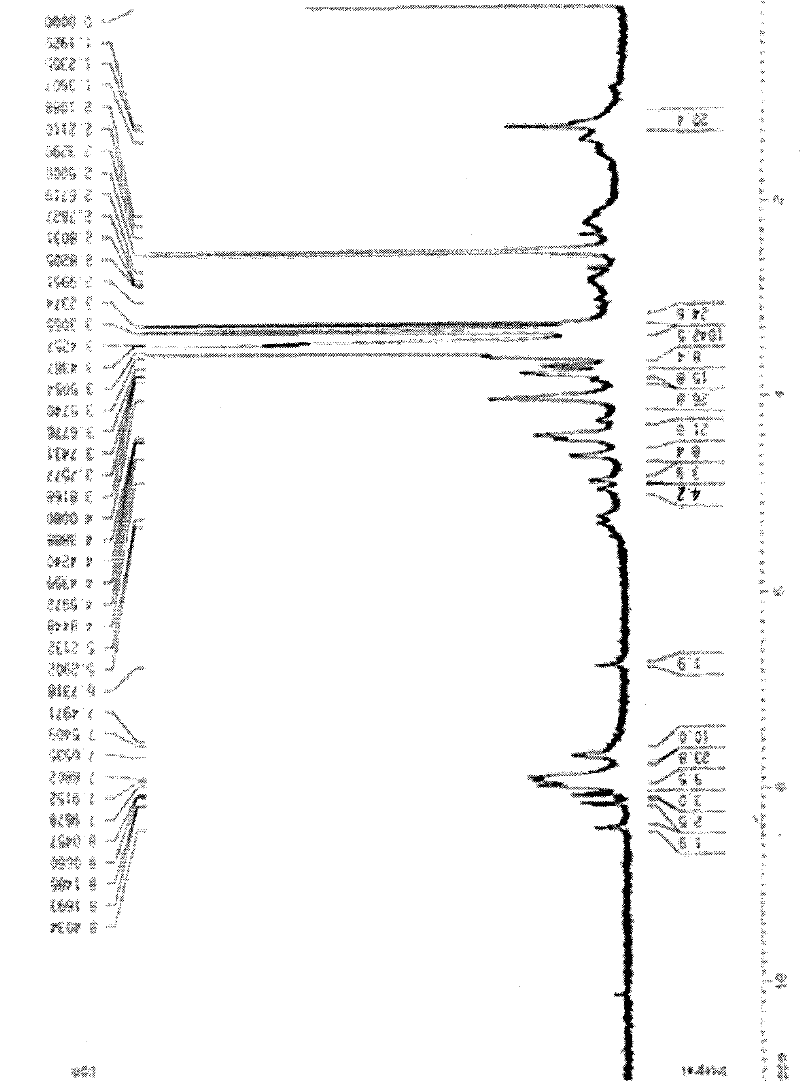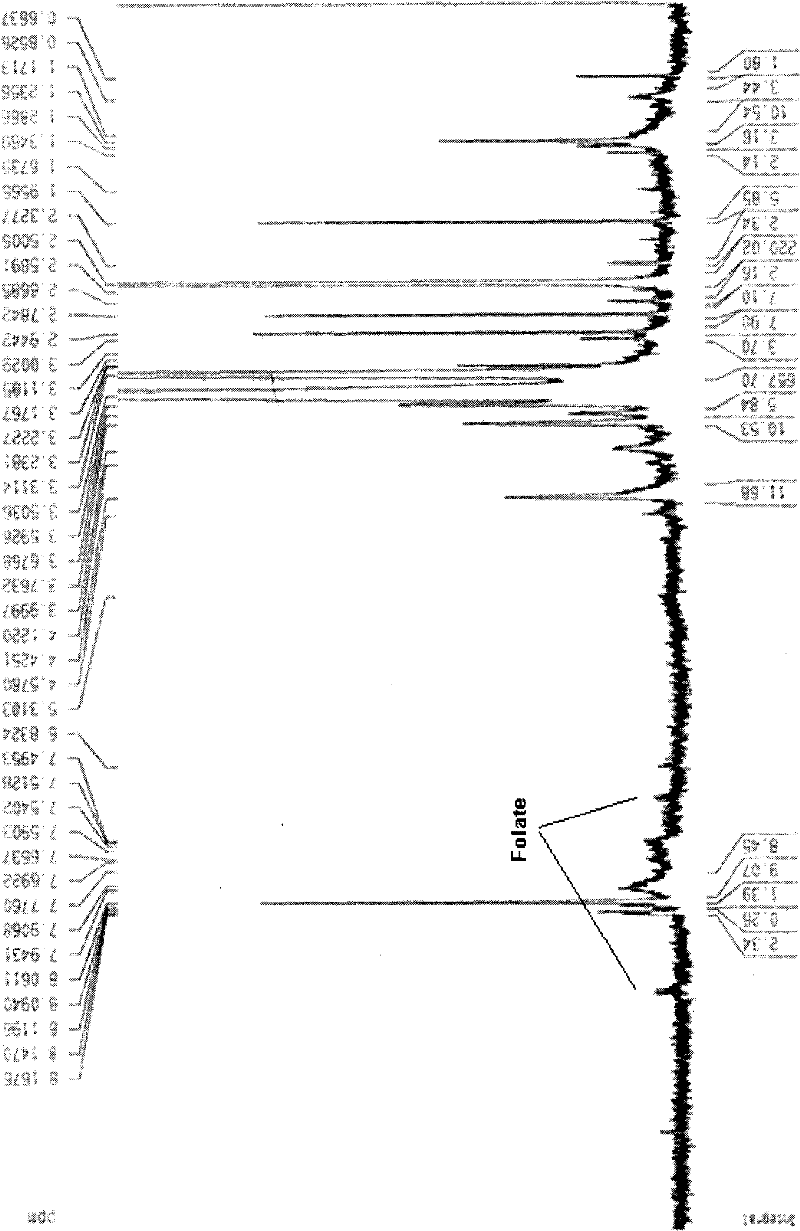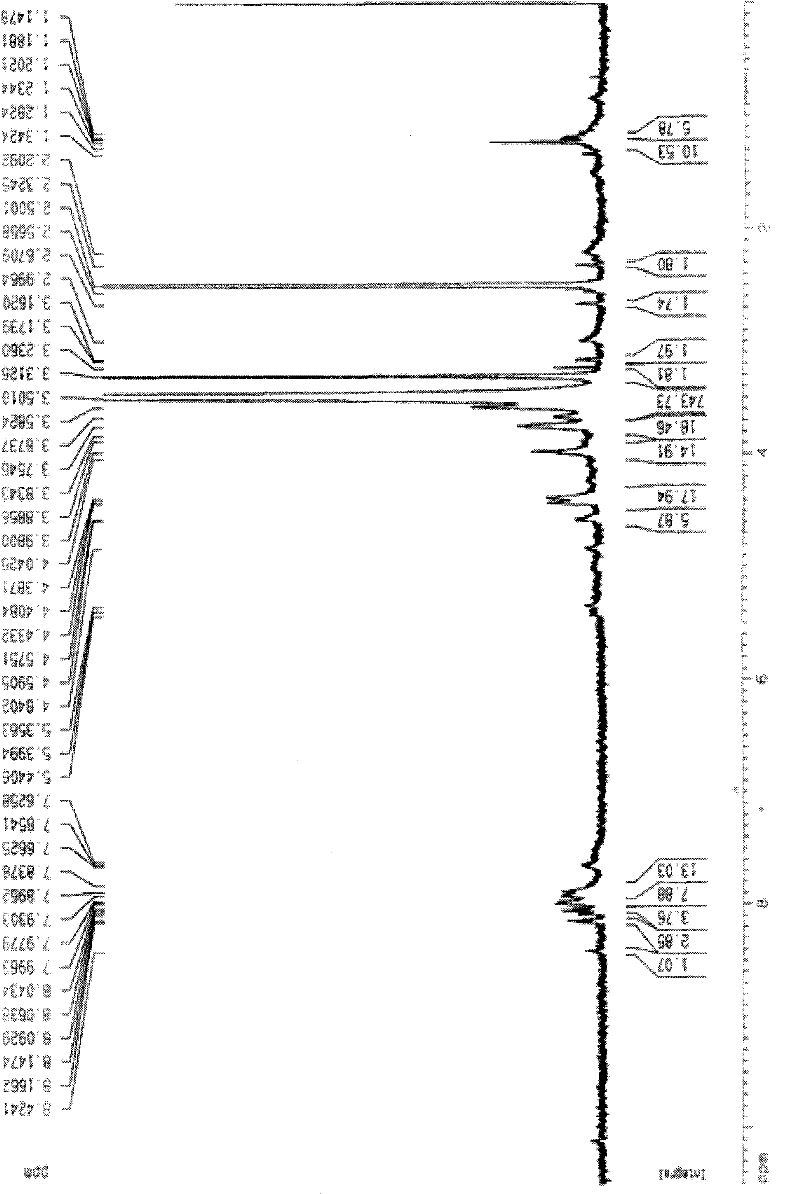PH-responsive polyethylene glycol-anticarcinogen conjugate, and synthetic method and application thereof
A polyethylene glycol and responsive technology, applied in the field of biomedicine, can solve the problems of normal human cell damage, limited clinical effect, poor stability, etc.
- Summary
- Abstract
- Description
- Claims
- Application Information
AI Technical Summary
Problems solved by technology
Method used
Image
Examples
Embodiment 1
[0066] Example 1 Synthesis of a pH-responsive polyethylene glycol-anticancer drug bond based on methoxypolyethylene glycol benzaldehyde monoester
[0067] The synthetic pathway of the reaction is as follows:
[0068]
[0069]
[0070] (1) Add 4g (0.002mol) monomethoxypolyethylene glycol, 2.4g (0.016mol) p-formylbenzoic acid, 0.1222g (0.001mol) 4-dimethylaminopyridine (DMAP) to 100ml In the round bottom flask, add 60ml of dry dichloromethane to mix the reactants evenly. In a water bath at 37°C under stirring, 10 ml of a solution of 3.3 g (0.016 mol) N, N'-dicyclohexylcarbodiimide (DCC) in dichloromethane was added dropwise to a round bottom flask to remove the reaction water produced in. After stirring at constant temperature for 24 hours, the reaction liquid was filtered to remove the reaction by-product N, N'-dicyclohexyl urea (DCU); Washing with glacial ether three times; after vacuum drying to remove the solvent, washing with water to remove excess DCC, and freeze-dr...
Embodiment 2
[0072] Example 2 Synthesis of a pH-responsive targeted polyethylene glycol-anticancer drug conjugate based on folic acid-terminated polyethylene glycol benzaldehyde
[0073] (1) Mix 3.4g (0.001mol) polyethylene glycol with one-terminal amino group and one-terminal folic acid group and 0.99g (0.004mol, the molar ratio of one-terminal amino group and one-terminal folic acid group polyethylene glycol is 1:4) N-succinyl The imino-p-formyl benzoate (SFB) was dissolved in 60 ml of dry dichloromethane, and reacted under stirring for 24 hours in a water bath at 50°C. After the reaction, the reaction solution was filtered to remove unreacted SFB; the filtrate was concentrated and then recrystallized with isopropanol, and the obtained crude product was washed three times with isopropanol and glacial ether, dried in vacuo to remove the solvent, and obtained a light yellow Powdered product - folate-terminated polyethylene glycol benzaldehyde amide.
[0074] (2) Take by weighing 77.8mg (0...
Embodiment 3
[0075] Example 3 Synthesis of a pH-responsive polyethylene glycol-anticancer drug conjugate based on benzaldehyde-terminated polyethylene glycol
[0076] (1) 4.6g (0.001mol) of polyethylene glycol with a molecular weight of 4600, 1.236g (0.008mol) of p-formylbenzyl chloride were dissolved in 60ml of dry chloroform, and 0.6g of K 2 CO 3 , after reflux at 80°C for 8 hours, filter the reaction solution, concentrate the filtrate and recrystallize with isopropanol, and wash the crude product three times with isopropanol and glacial ether successively; after vacuum drying, a white powder is obtained The product is benzaldehyde-terminated polyethylene glycol (polyethylene glycol with benzaldehyde groups at both ends linked by ether linkages).
[0077] (2) Take by weighing 214mg (0.4mmol) demethoxydaunorubicin, 242mg (0.05mmol, with the molar ratio of demethoxydaunorubicin 1:8) the terminal benzaldehyde synthesized in step (1) Polyethylene glycol was dissolved in 100 ml of dry ethan...
PUM
 Login to View More
Login to View More Abstract
Description
Claims
Application Information
 Login to View More
Login to View More - R&D
- Intellectual Property
- Life Sciences
- Materials
- Tech Scout
- Unparalleled Data Quality
- Higher Quality Content
- 60% Fewer Hallucinations
Browse by: Latest US Patents, China's latest patents, Technical Efficacy Thesaurus, Application Domain, Technology Topic, Popular Technical Reports.
© 2025 PatSnap. All rights reserved.Legal|Privacy policy|Modern Slavery Act Transparency Statement|Sitemap|About US| Contact US: help@patsnap.com



